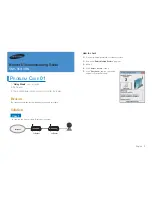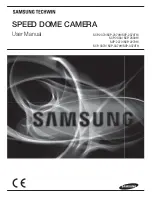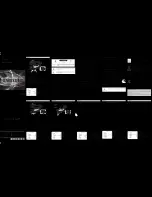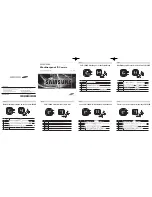
Camera Performance and Features
33
as per the inspection system, including lens magnification, aperture, and illumination
intensity, spectral content, plus illuminator beam structure.
Flat field calibration should be performed when the camera temperature has stabilized.
When the camera is asked to run a flat field calibration it will adjust all pixels to have the
same value as that of the peak pixel value or target level, as per the calibration mode
selected.
If the flat field calibration is set to a target level that is lower than the peak value and the
system gain is set to a low value, then it is possible that the sensor will maximize its output
before the camera’s output reaches 255 DN. This can be seen when a portion of the output
stops increasing before reaching 255 DN with increasing illumination and the PRNU
deteriorates. This effect can be resolved by decreasing the light level or exposure control
time.
Following a flat field calibration, all pixels should be at their un-calibrated peak value or target
value. Changing gain values now allows the user to make refinements to the operating responsivity
level.
Note that the best flat field calibration can be achieved by performing it at the mid DN level of the
working range used in the operation. Any flat field error associated with residual non linearity in
the pixel will be halved as compared to performing a calibration at the peak value of the operating
range. A simple way of performing this is to reduce exposure time to half what is used in the
operation in order to get the mid DN level for flat field calibration. Once complete, return the
exposure time to its original setting.
Those areas of the image where high roll-off is present will show higher noise levels after flat field
calibration due to the higher gain values of the correction coefficients. Flat field calibration can only
compensate for up to an 8:1 variation. If the variation exceeds 8:1 then the line profile after
calibration will include pixels that are below the un-calibrated peak level.
Note:
The Linea camera has many different modes of operation. It is strongly recommended that the camera
be flat fielded for that mode of operation that is intended including direction of scan.
Saving & Rapidly Loading a PRNU Set Only
See the section Flat Field Category in Appendix A for GenICam features associated with this section
and how to use them.
Related Features: flatfieldCorrectionCurrentActiveSet, flatfieldCalibrationSave,
flatfieldCalibrationLoad
A user set includes all the “settings” (e.g. gain, line rate), FPN and PRNU coefficients, and a LUT.
These three features let you save/load just the PRNU coefficients. Loading a complete user set
takes approximately 1 second while loading only the user PRNU coefficients takes less than 200
milliseconds
Use the User PRNU Set Selector parameter
to select the set you want to save or load. 17 sets are
available—16 user and 1 factory.
The
Factory Set
is read-only and contains all ones. Loading the Factory Set is a good way to clear
the user PRNU.
Save the current user PRNU coefficients using the “Save User PRNU Set” command. Load the user
PRNU coefficients from the set specified using the “User PRNU Set Selector” and the “Load User
PRNU Set” command features.
Содержание Linea HS Series
Страница 5: ...The Linea HS Monochrome Cameras 5 DECLARATION OF CONFORMITY 73 DOCUMENT REVISION HISTORY 74...
Страница 13: ...The Linea HS Monochrome Cameras 13 Responsivity QE Plots Note values measured using 8 bit 1x gain main array...
Страница 14: ...14 The Linea HS Monochrome Cameras Mechanical Drawings Figure 3 HL FM 08K30H 00 R Mechanical Drawing...
Страница 15: ...The Linea HS Monochrome Cameras 15 Figure 4 HL HM 16K30H 00 R Mechanical Drawing...
Страница 26: ...26 Camera Performance and Features Figure 7 Image with incorrect scan direction...
Страница 73: ...Declaration of Conformity 73 Declaration of Conformity...
















































